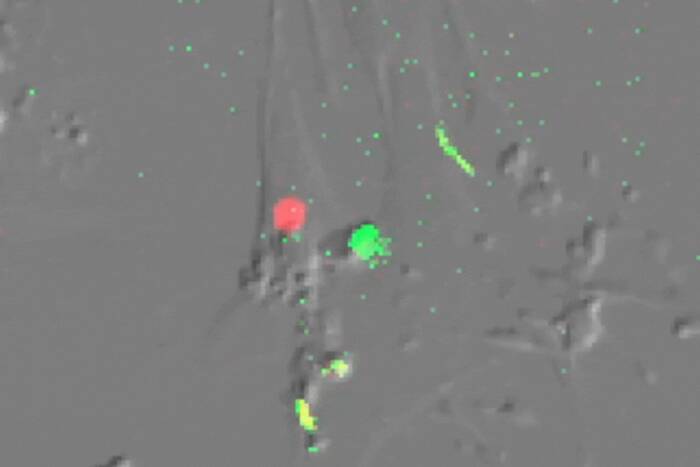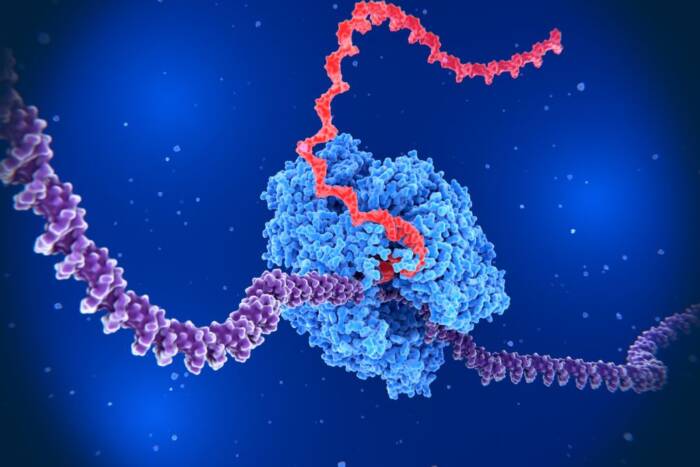Researchers Shed Light on How Cells Commit Suicide
A team of researchers led by Associate Professor David Cowburn, Ph.D., has determined the three-dimensional structure of a molecule that regulates programmed cell death, a critical process important for many diseases, including cancer, heart disease and autoimmunity. The structure, reported in the March 5 issue of the journal Cell, provides a model for developing compounds to switch cell suicide on or off to treat these diseases. An accompanying paper by Gerhard Wagner, Ph.D., of Harvard Medical School describes a similar structure.
“The three-dimensional structure of this molecule provides insight into how these proteins mediate into how these proteins mediate specific cell death,” says Cowburn, co-author and head of the Laboratory of Physical Biochemistry.
Programmed cell death, or apoptosis, is an integral component of the well-being of an organism because it controls the number of cells and eliminates genetically or environmentally damaged cells. Many diseases can be seen as a result of cellular imbalance. Cancer and autoimmune diseases result in part from the survival of too many cells, while immunological diseases, neurodegenerative disorders and infertility occur when there is an excess of cell death.
Cowburn collaborated with Stanley Korsmeyer, M.D., and Curt A. Milliman, B.S., at Washington University School of Medicine. Korsmeyer, now at the Dana-Farber Cancer Institute at Harvard Medical School, has spent the last several years studying a family of proteins called Bcl-2, which he and others has shown to be involved in the cell death process. Some members of the protein family induce cell death and are known as proapoptotic agents, while others, called antiapoptotic agents, prevent it.
The structure solved, known as Bid (Bcl-2 interacting domain), is a proapoptotic member of the Bcl-2 protein family. Recently, Korsmeyer’s group and others showed that Bid, which is normally inactive, becomes active when cleaved, or chopped up, by an enzyme called a caspase. The truncated form of Bid, designated tBid, travels to the cell’s power house the mitochondria, wreaking havoc with the cellular machinery and causing the cell to die.
First author James McDonnell, Ph.D., and co-author David Fushman, Ph.D., with Cowburn used a technique called nuclear magnetic resonance (NMR) to study the Bcl-2 proteins. NMR is a technique for observing molecules as they float in solution, much like their natural environment in the living cell, providing dynamic views of the molecules and their functions.
The structure is a complex packing of several helices against each other. The site of cutting by the enzyme surprisingly resides in a long unstructured loop. Modeling how the cut molecule looks suggests that the product is much more hydrophobic and less charged, possibly making it suitable to be a membrane pore former in the mitochondria. The solution NMR structure confirms the earlier observation Korsmeyer and his colleagues made using biochemical techniques, and provides a framework for understanding the structures of other members of the Bcl-2 protein family and how some stimulate cell death and some suppress it.
“This provides critical structural evidence for activation events which convert constitutively inactive molecules to active pro-death effectors,” says Korsmeyer.
“Our paper now permits a clear classification, previously unavailable, of the sequential and structural alignments of the Bcl-2 family,” says Cowburn. “Our work provides a model for the Bcl-2 family’s cell-death inducing and inhibiting roles, as well as the modifications needed for activation.”
The research was supported in part by the National Institute of General Medical Sciences and by the National Cancer Institute, both part of the federal government’s National Institutes of Health.


